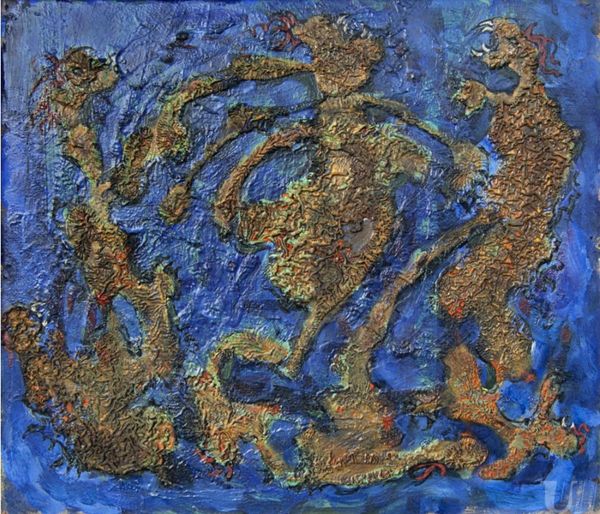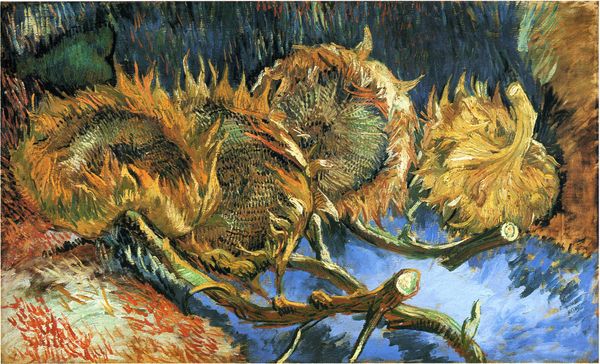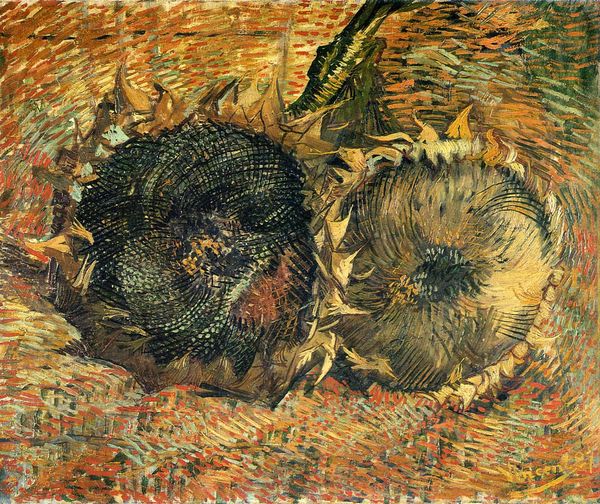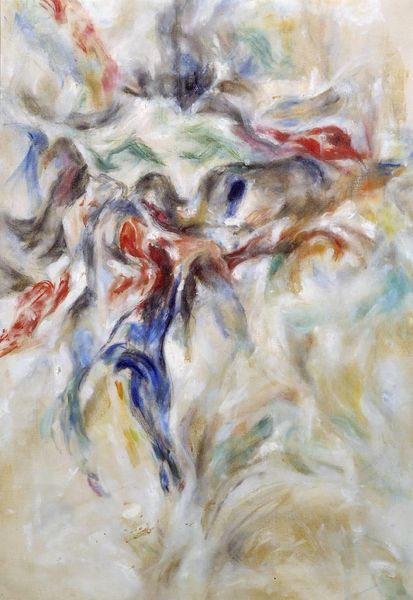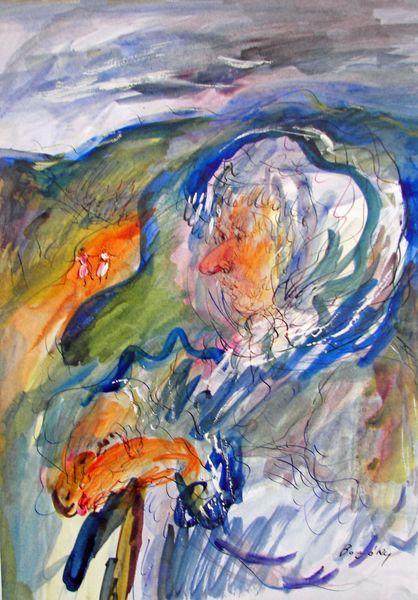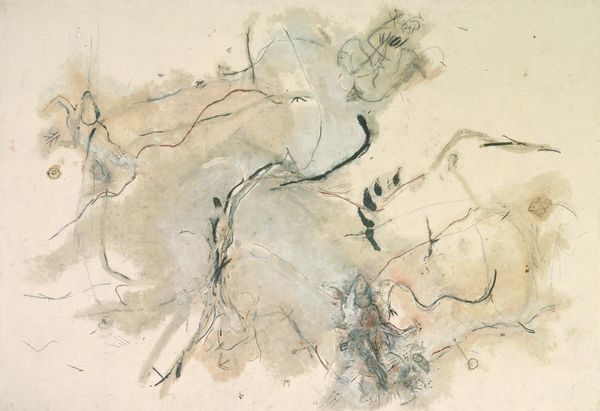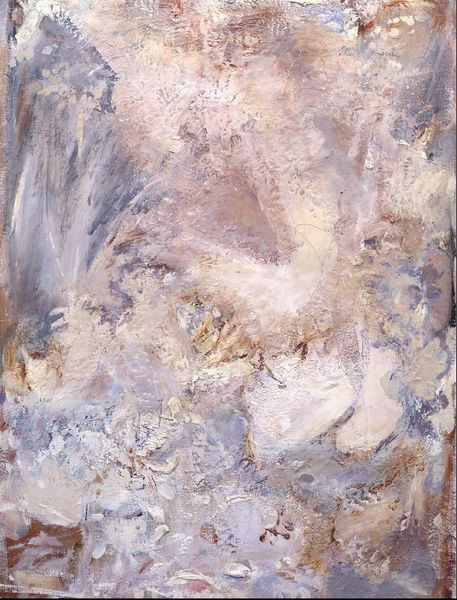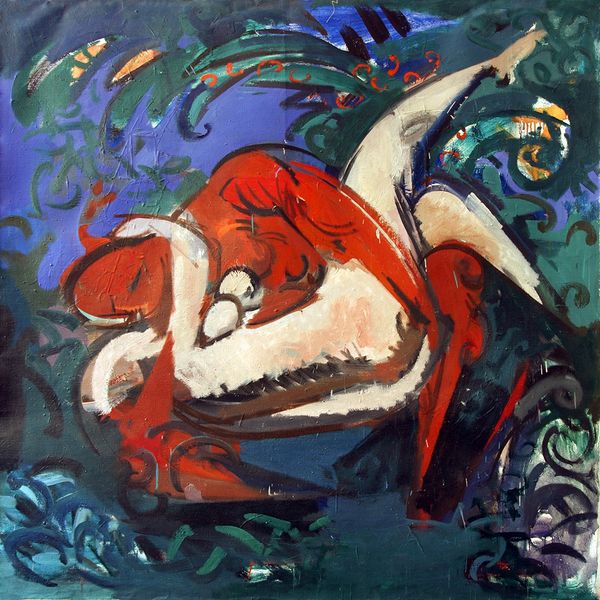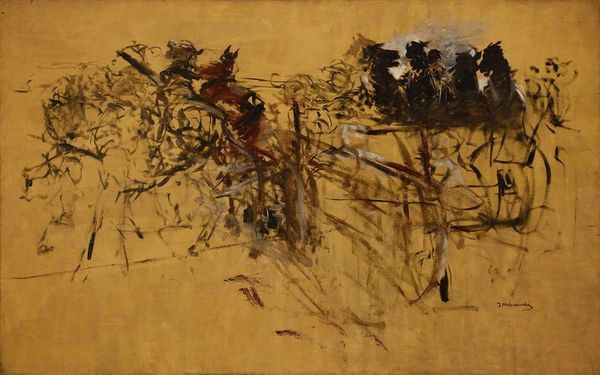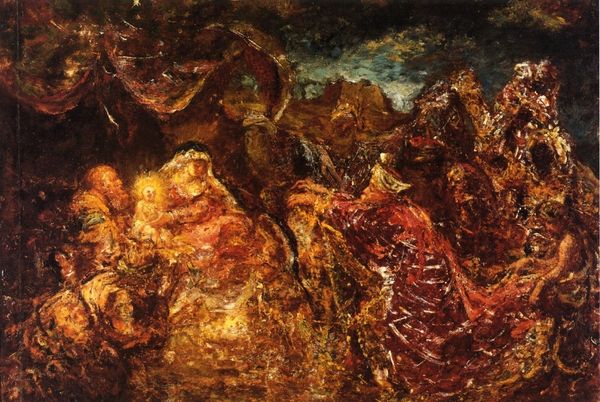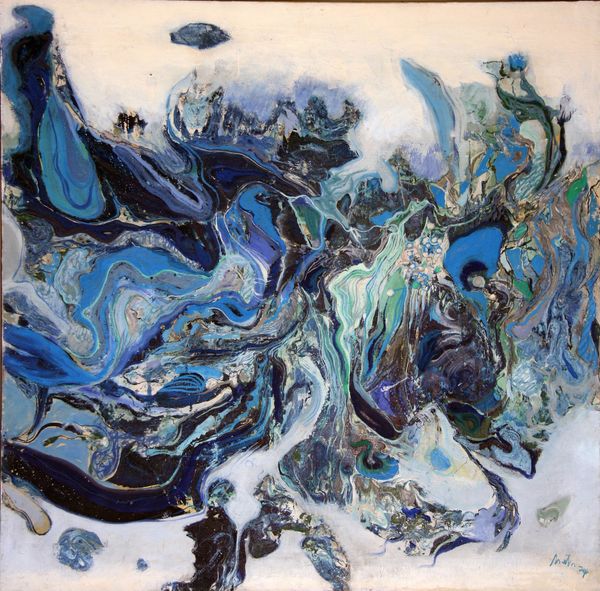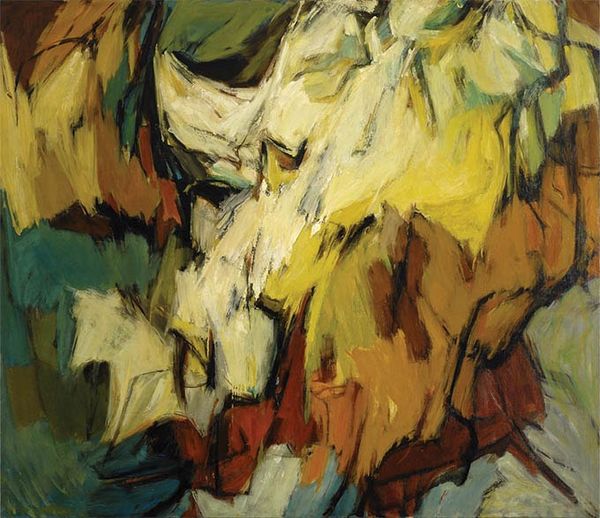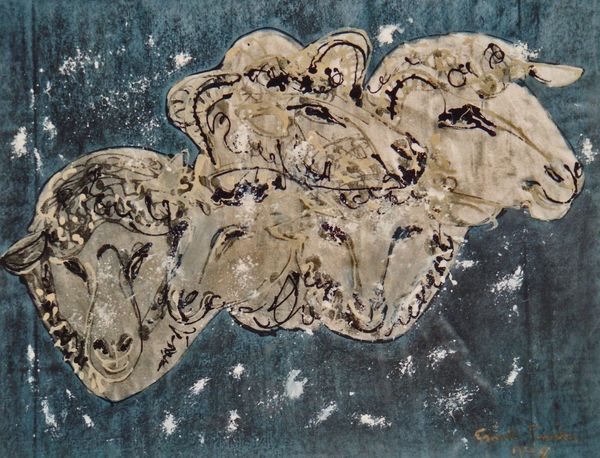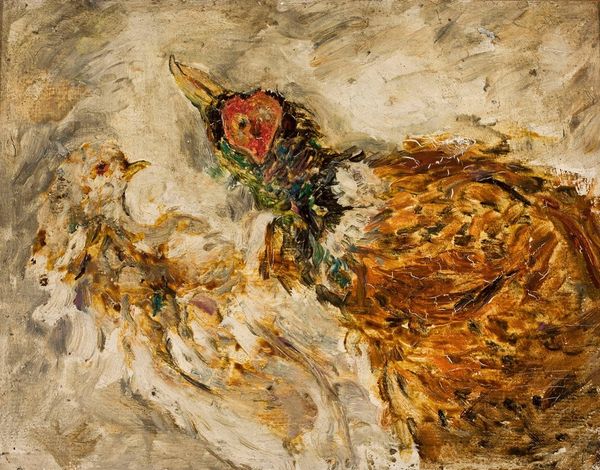
Copyright: Public domain
Editor: Here we have John Ruskin's "Fast sketch of withered oak," created in 1879, using oil paint. I'm struck by how vulnerable the subject seems. What's your take on this artwork? Curator: It’s fascinating how Ruskin uses a seemingly simple sketch of a decaying leaf to speak to broader societal anxieties. Consider the socio-political climate of 1879. The Industrial Revolution was in full swing, transforming the British landscape and challenging traditional values. Editor: So you see this leaf as more than just a leaf? Curator: Exactly! Ruskin was deeply concerned about the dehumanizing effects of industrial capitalism. This withered oak becomes a potent symbol of the decay he witnessed, not just in nature, but in society itself. Notice how he contrasts the delicate, decaying leaf against the vast, almost indifferent blue background. How might we interpret this in relation to environmental degradation, or even the withering of traditional craft? Editor: That’s a powerful connection. The scale does make the leaf feel isolated and exposed, as if symbolizing something much larger at stake. Curator: Precisely. Think of Ruskin's writings on the importance of art, craft, and nature as intertwined with moral and social well-being. The vulnerability you initially perceived becomes a critical statement about loss—loss of connection to nature, loss of meaningful work, loss of spiritual grounding. The piece urges us to reflect on our relationship with the natural world and the ethical implications of progress. Editor: I never would have looked at a leaf in that way before. I was focused on the delicate brushstrokes, and the realism. Thank you for a powerful insight into this painting. Curator: It's through these dialogues that we unlock the potential of art to challenge, provoke, and inspire change.
Comments
No comments
Be the first to comment and join the conversation on the ultimate creative platform.
